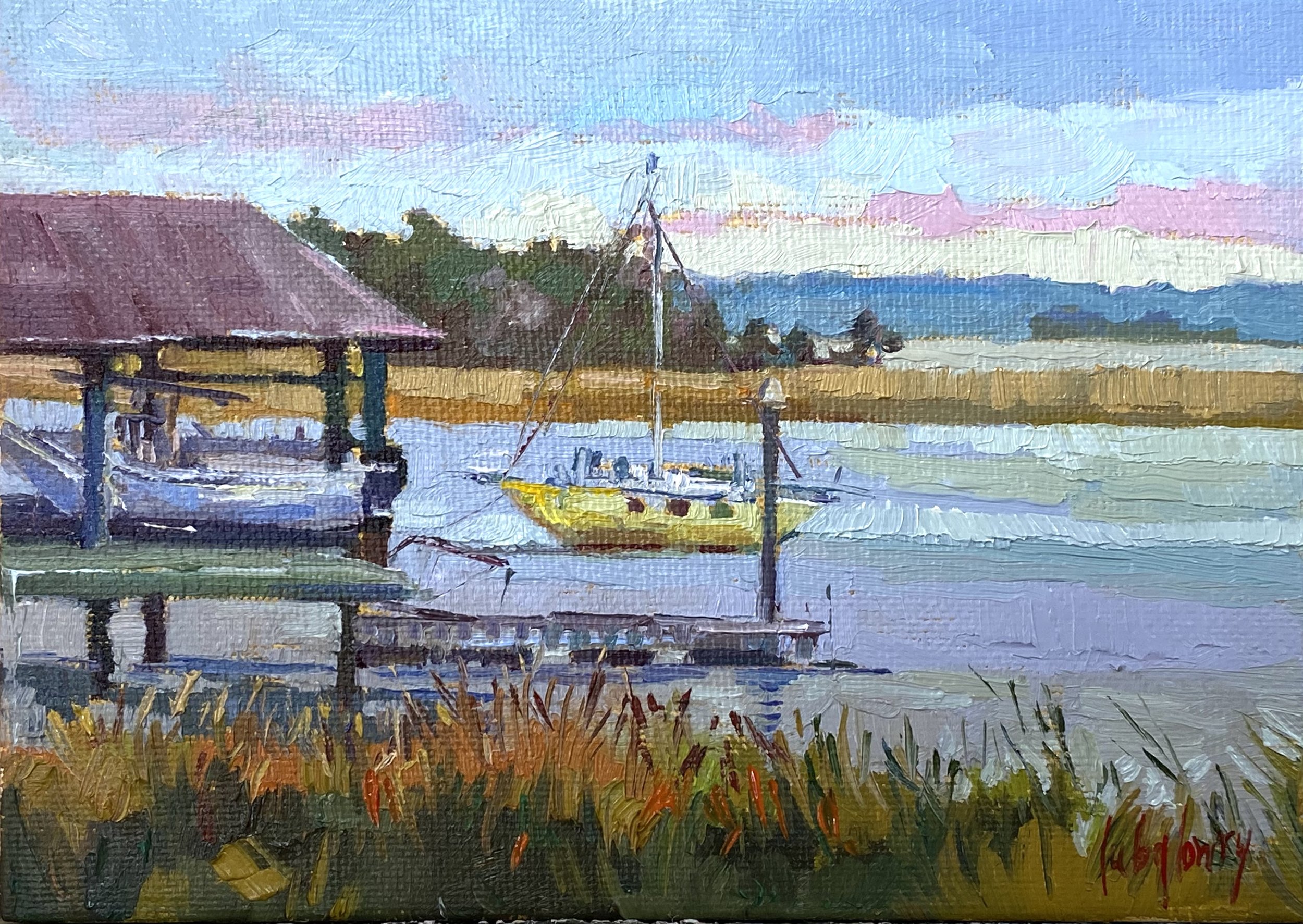#153: On the Skidaway River Near the Isle of Hope Marina
"Isle of Hope—such an intriguing name! The name
expressed the colonialists' hopes of prosperity."
—Polly Wylly Cooper
On the Skidaway River Near the Isle of Hope Marina
A massive horseshoe bend in the Skidaway River approximates my position as I painted this scene en Plein air near the Isle of Hope Marina. The breeze was chilly coming off the water on this December morning. Around the area, I could have selected among dozens of reference points equally as fun.
Though surrounded by salt marshes, the Isle of Hope is not an island. Instead, it is part of a peninsula reaching out toward the Atlantic Ocean fronted by a significant barrier called Skidaway Island. Two additional barrier islands fronting Skidaway help protect the Isle of Hope from Atlantic hurricanes: Little Wassaw Island and Wassaw Island — both of which house the Wassaw National Wildlife Refuge.
The entire surrounding area is stunning in its natural beauty. The community of Isle of Hope is picturesque for its historic homes and narrow tight-knit streets. Its storied history adds to its significance in Savannahian history. I've painted nearby scenes, including George Whitefield's Bethesda Orphanage (see PFS-146) and the Avenue of Live Oaks on the Wormsloe Plantation (see PFS-07).
When the frigate Anne arrived in 1733 to establish the 13th British Colony in North America, the area that became the Isle of Hope was essential to General James Oglethorpe's overall plan for the Georgia Colony. An important element of Oglethorpe's commission in Georgia was to protect the other British Colonies from encroachment by the Spanish from the south in Florida.
Among the 114 colonists arriving with Oglethorpe were Nobel Jones and his family. In 1736, Jones leased 500 acres on the Isle of Hope and named his plantation Wormsloe. Oglethorpe immediately ordered Jones to build a military fortification on the property. Jones fought against the Spanish alongside General Oglethorpe as the commander of Georgia's Northern Company of Marines during the War of Jenkins's Ear (1739-1748). Much of that war took place on in the Caribbean, but Oglethorpe's forces did defeat an invading Spanish force at the Battle of Bloody Marsh on Georgian soil.
The Spaniards formally recognized Georgia as an English colony in the peace settlement that followed.
King George II granted Nobel Jones title to the land in 1756. And for a remarkable ten generations, the descendants of Jones (among the Jones, De Renne, and Barrow families) continuously managed the Wormsloe Plantation property. It is my understanding that Craig and Diana Barrow continue to reside on a small acreage sliced off from the original Wormsloe Plantation to this day.
The result of that uninterrupted stewardship was Wormsloe remained intact and has become a miracle of historical preservation. In particular, the De Renne and Barrow families were avid collectors of Georgiana history. In 1938, for example, the University of Georgia acquired the De Renne Library, which included tens of thousands of rare books and historical documents from the Georgian Colony.
As you enter the Wormsloe Plantation, you'll be awed by the mile-long Avenue of Live Oaks. You'll see the ruins of the fortification built by Nobel Jones in the late-1730s and early-1740s. After the Trustees released their authority over the colony, you'll also quickly be acquainted with how enslaved Africans came to dominate Georgia's economic arrangements, much to General Oglethorpe's disappointment. You'll also see artifacts of Native American inhabitants who proceeded the arrival of the Colonialists.
The site has been open to the public since 1979 after the Barrow family donated Wormsloe to the National Conservancy. The Georgia Department of Natural Resources now manages the site.



